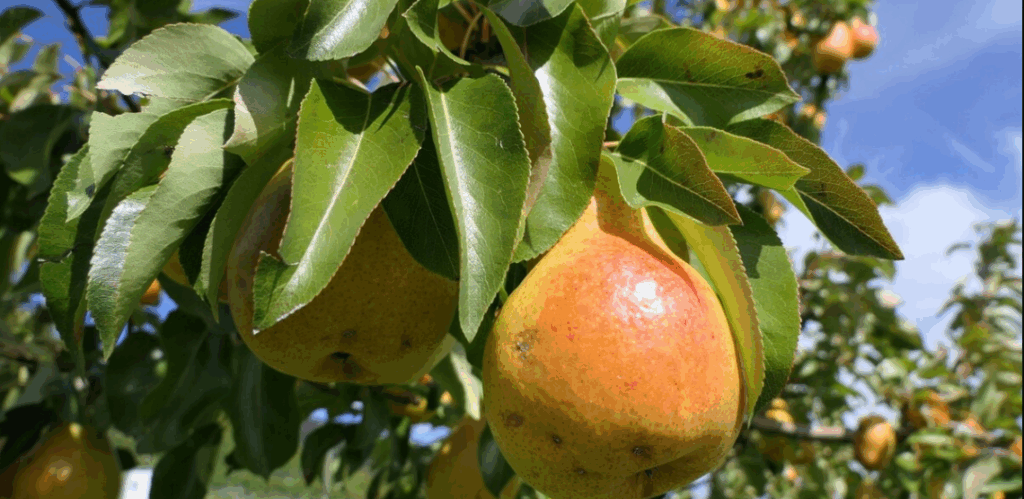How Do You Trim a Bradford Pear Tree

How Do You Trim a Bradford Pear Tree Bradford pear trees are infamous for their fast growth and their equally fast downfall. If you have got one in your yard, you might have probably wondered: How do you trim a Bradford pear tree without it splitting in half later? The secret lies in trimming during the dormant period and understanding how to trim correctly. In this comprehensive guide, you will get to know which season is best for trimming and how to trim trees professionally to secure your landscapes. We will also tell you some common mistakes to avoid to keep your Bradford Pear healthy for years to come. What Is a Bradford Pear Tree? The Bradford pear tree is a cultivar of the Callery pear. It was originally introduced in the U.S. in the 1960s. They became super popular because they grow really fastand bloom with bright white flowers in spring, thereby looking neat and uniform. But Bradford pears are weak as well. They form narrow, V-shaped branch unions that are prone to breaking, especially during storms. This is why trimming isn’t optional. It is essential. If you skip it, you are waiting for a limb to crash onto your driveway. Why It’s Important to Trim a Bradford Pear Tree Bradford pear trees are genetically doomed to break apart if not managed carefully. It prevents structural failure by reducing pressure on weak limbs. By removing dead, diseased, or rubbing branches, you can shape your tree and balance it. Moreover, you can protect your property from falling limbs. When to Trim a Bradford Pear Tree The best time to trim a Bradford pear tree is late winter or early spring. The tree is dormant, but before new growth starts. Why? So, avoid trimming in fall. It encourages new growth too close to winter.And don’t prune when it’s flowering. You will stress the tree and ruin the blooms. Tools You Will Need to Trim a Bradford Pear Tree Don’t show up with kitchen scissors. Use the basic gear you will need: Step-by-Step: How Do You Trim a Bradford Pear Tree Properly? This is where it gets real. Let’s walk through the exact steps you need to follow when trimming your Bradford pear tree. Step 1: Inspect the Tree’s Structure First, start by standing back and looking at your tree from all angles. Look for weak V-shaped joints where branches split and dead or diseased limbs. Suckers growing at the base or vertical sprouts up top. If a branch looks sketchy, it probably is. Step 2: Start From the Bottom Trim the suckers growing from the base of the trunk. These shoots drain energy and do nothing useful. Next, remove water sprouts. These are thin vertical branches that shoot straight up from main limbs. Both of these are tree clutter. Get rid of them. Step 3: Cut Problem Limbs Now look for branches that are: Cut those back to the branch collar. This is the area that is slightly raised where a limb joins the trunk or a larger branch. Never cut flush with the trunk and never leave a long stub. This helps the tree heal faster and avoids rot. Step 4: Thin the Crown Now we shape the inside. This step is called crown thinning. This technique helps light and air move through the canopy. Remove no more than 25% of the tree’s branches and focus on even spacing between limbs. You can keep dominant branches with good angles. But make sure to avoid stripping one side more than the other, as you are not trying to gut the tree, just giving it room to breathe. Step 5: Shape the Tree This is the finesse work. Bradford pears tend to grow in weird directions if left alone. You want to encourage a strong central leader, which is the main vertical trunk. To do this, remove branches that compete with it. Then balance the tree by trimming overly long or heavy branches that throw off the symmetry. Don’t aim for perfection, but just prevent imbalance. Common Mistakes When Trimming Bradford Pear Trees Most people mess this up. Do not do the following to get flawless results: 1. Topping the tree Never top a Bradford pear. Topping means chopping off the top section of the tree flat. It will destroy the natural shape of your tree and encourage weak regrowth. Moreover, it will make your tree prone to diseases as the wounds are open. Yes, it might look like a quick fix, but it leads to long-term damage. 2. Removing too much at once If you remove more than 25% of the branches in a single season, you will shock the tree and slow down growth. Additionally, it will make it vulnerable to pests and heat. You can spread heavy trimming out over 2-3 years if needed. 3. Cutting at the wrong place Avoid cutting too close to the trunk and too far out (stub and flush cuts). Always cut just outside the branch collar so it heals naturally. 4. Ignoring structural pruning in early years If you don’t shape the tree while it is young, it will form narrow crotch angles, competing leaders, and dense, messy canopies. Start shaping from year one, and your trees will thank you. How do I Prevent Splitting in Mature Bradford Pear Trees Bradford pears split like it’s their job. 1. Focus on strong branch angles Cut out any limb that forms a tight V-shape. These are the ones most likely to split whereas you can keep limbs that form 45–60 degree angles. They are much stronger. 2. Prune for structure every year Annual structural pruning in late winter distributes weight evenly and increases the lifespan of your tree. Don’t skip a season just because the tree looks “fine.” 3. Lighten heavy limbs If a branch is stretching too far or sagging, remove the outer sections to reduce weight. 4. Consider tree cabling (as a last resort) For large Bradford pears with multiple trunks, certified



